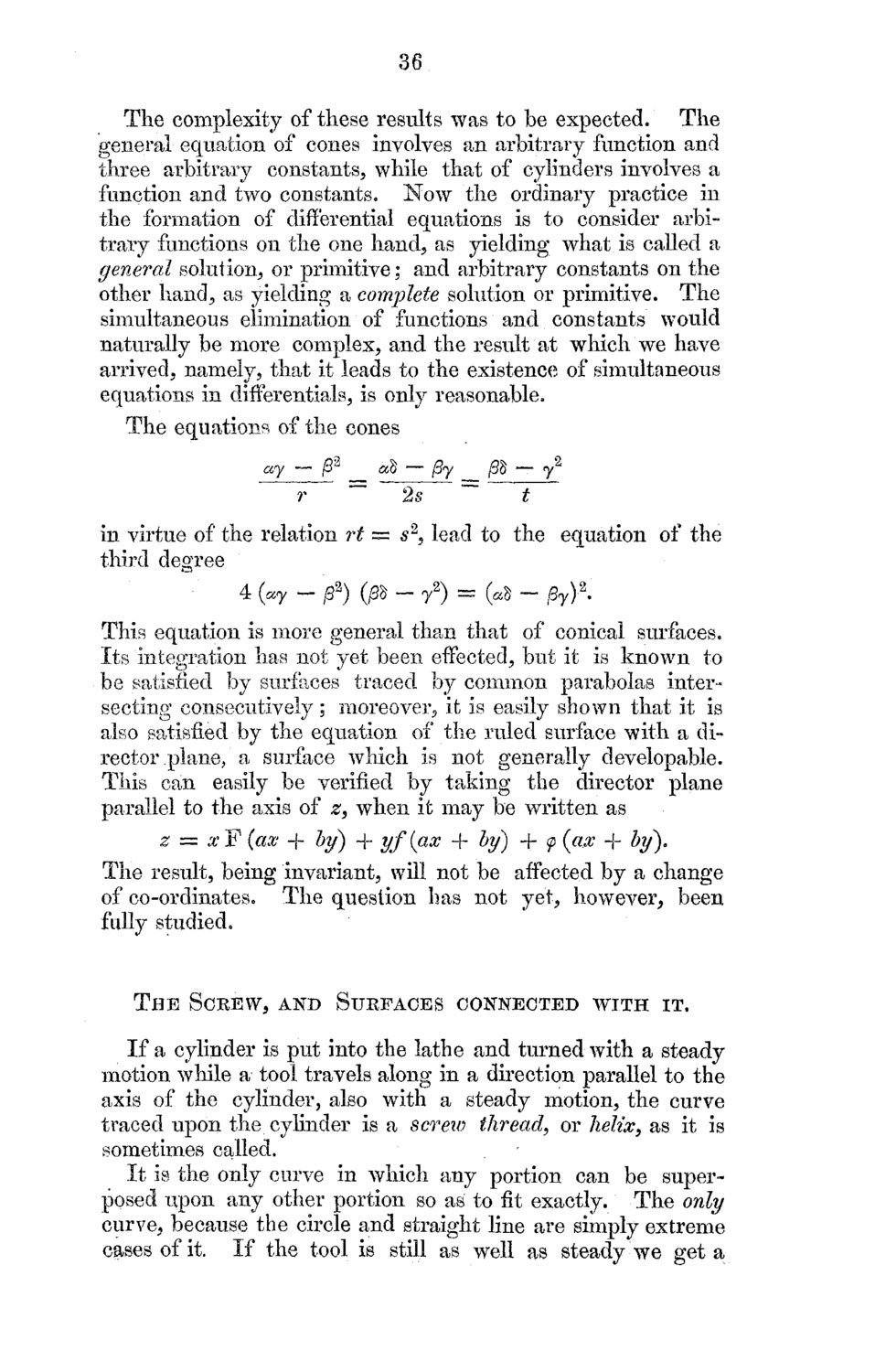| |
| |
Caption: Mathematical Models Catalog of a Collection of Models of Ruled Surfaces
This is a reduced-resolution page image for fast online browsing.

EXTRACTED TEXT FROM PAGE:
36 T h e complexity of these results was to be expected. T h e general equation of cones involves an arbitrary function and three arbitrary constants, while that of cylinders involves a function and two constants. N o w the ordinary practice in the formation of differential equations is to consider arbitrary functions on the one hand, as yielding what is called a general solution, or primitive; and arbitrary constants on the other hand, as yielding a complete solution or primitive. T h e simultaneous elimination of functions and constants would naturally be more complex, and the result at which w e have arrived, namely, that it leads to the existence of simultaneous equations in differentials, is only reasonable. T h e equations of the cones ay ~ ff2 _ ad — ftp __ ffi -r y2 r ~~ 2s "" t " in virtue of the relation rt = s2, lead to the equation of the third degree 4 («y - ]8a) OSS - y2) = ( » - ]Sy)-2. * This equation is more general than that of conical surfaces. Its integration has not yet been effected, but it is k n o w n to be satisfied by surfaces traced by c o m m o n parabolas intersecting consecutively; moreover, it is easily shown that it is also satisfied by the equation of the ruled surface with a director plane/a surface which is not generally developable. This can easily be verified by taking the director plane parallel to the axis of z, w h e n it m a y be written as z ~ x F (ax + by) + y f (ax + by) + < (ax -f by). p T h e result, being invariant, will not be affected b y a change of co-ordinates. T h e question has not yet, however, been fully studied. The Screw, and Surfaces connected with it. If a cylinder is put into the lathe and turned with a steady motion while a tool travels along in a direction parallel to the axis of the cylinder, also with a steady motion, the curve traced upon the cylinder is a screw thread, or helix, as it is sometimes called. It is the only curve in which any portion can be superposed upon any other portion so as tofitexactly. T h e only curve, because the circle and straight line are simply extreme cases of it. If the tool is still as well as steady w e get a
| |